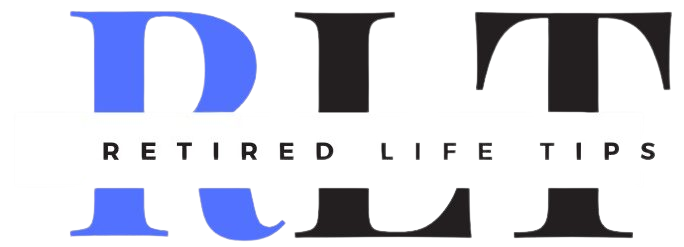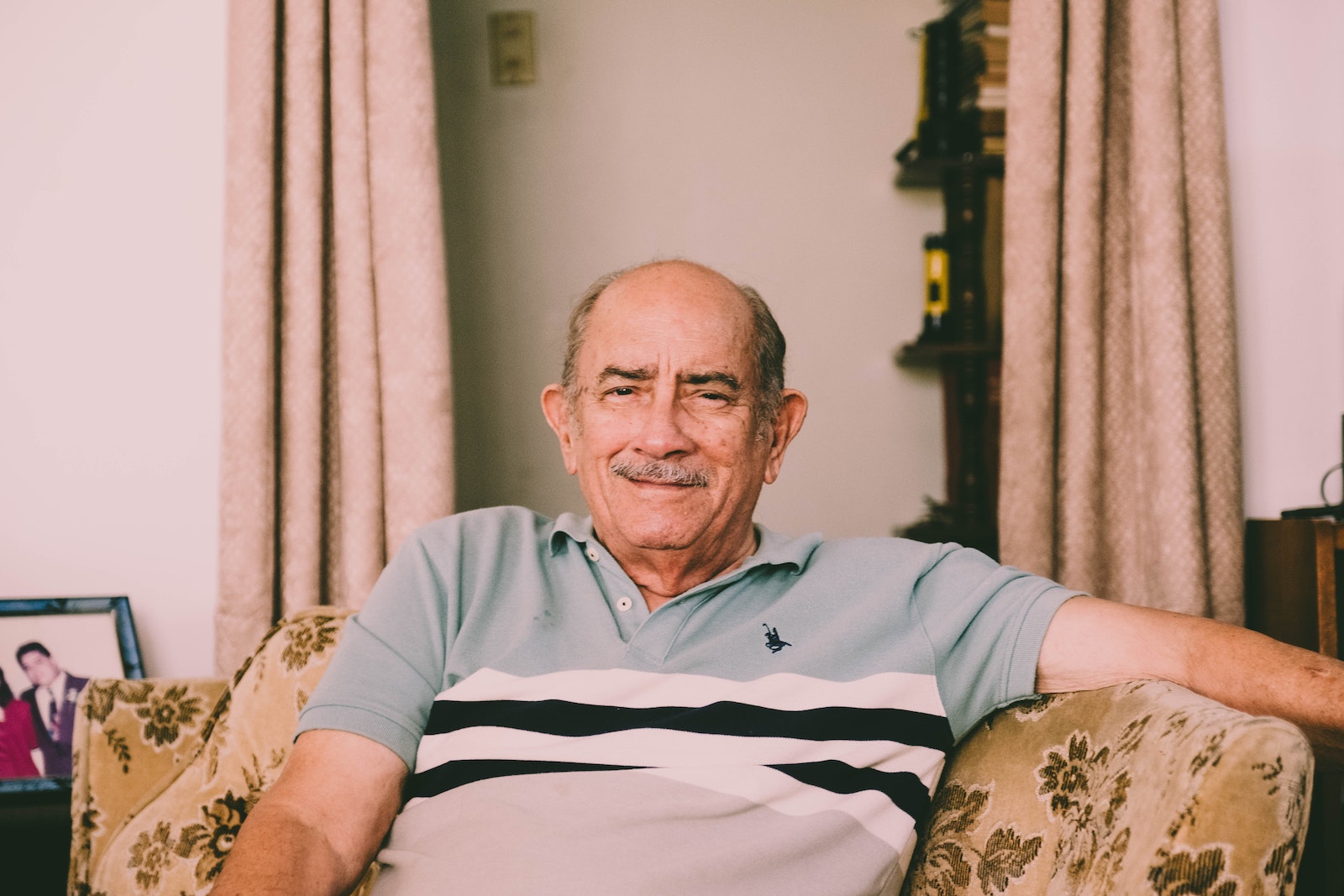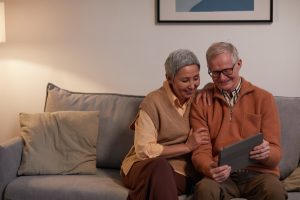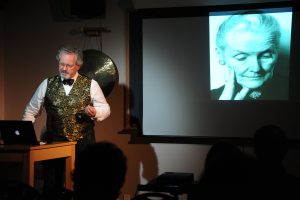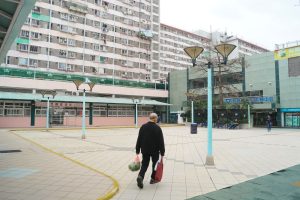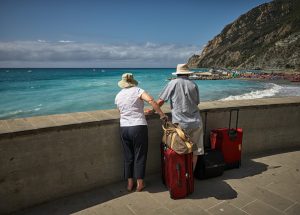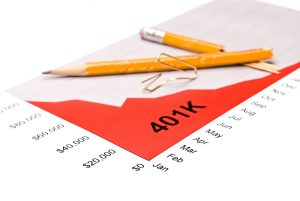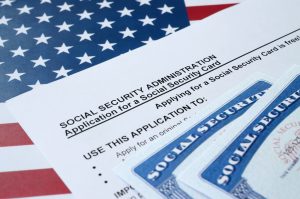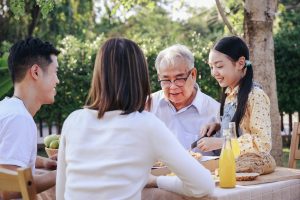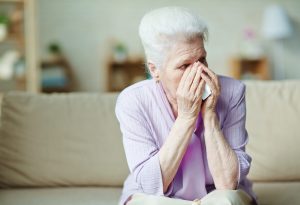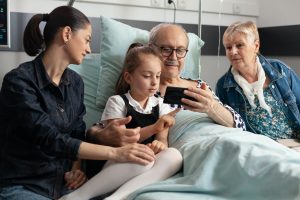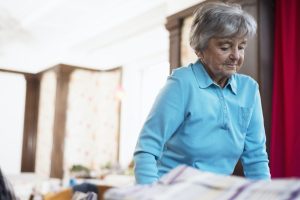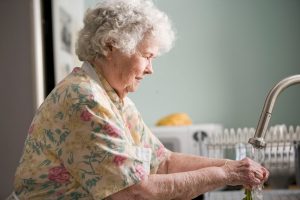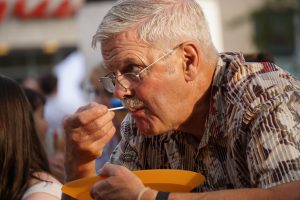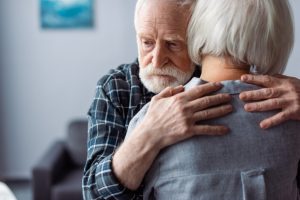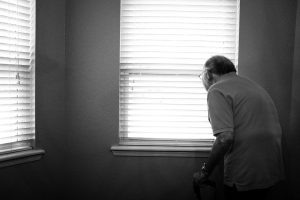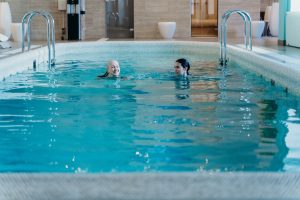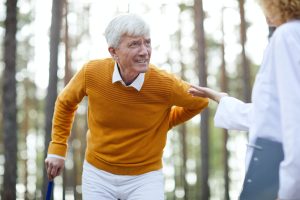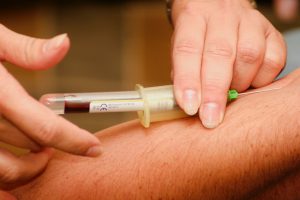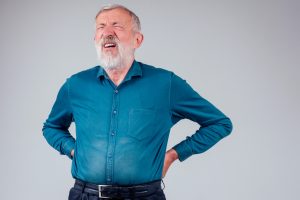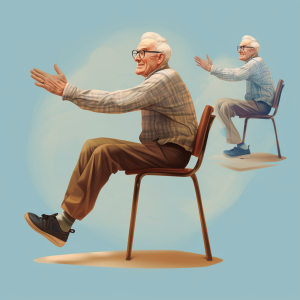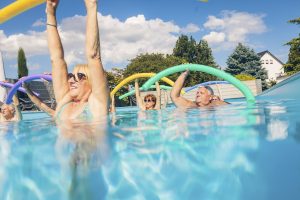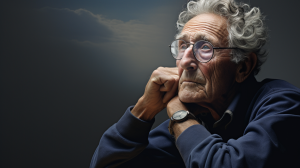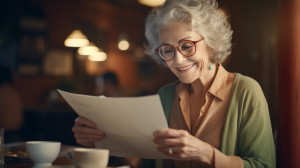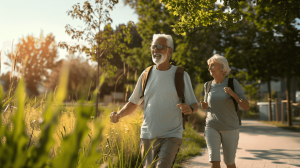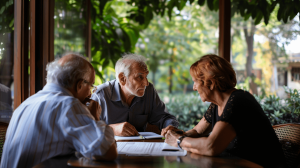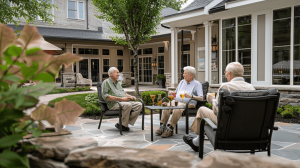Understanding stroke in the elderly is a vital piece of knowledge that everyone should know in event there is an emergency. Stroke, often referred to as a “brain attack,” is a medical emergency that can have severe consequences, especially for the elderly.
As we age, the risk of stroke increases, making it crucial to understand the symptoms, preemptive measures, and treatment options. In this article, we will delve into the symptoms of stroke in the elderly, what to do when you suspect someone is having a stroke, and preventative methods that can reduce the risk of this life-altering event.
Contents
- 1 Understanding Stroke in the Elderly
- 2 Recognizing the Symptoms
- 3 The Importance of Time
- 4 Preemptive Treatments
- 5 Final Thoughts on Understanding Stroke in the Elderly
- 6 FAQs
- 6.1 Q1. Can strokes in the elderly be prevented entirely?
- 6.2 Q2. Are there age-specific risk factors for strokes in the elderly?
- 6.3 Q3. What should I do if I suspect someone is having a stroke?
- 6.4 Q4. What is the difference between an ischemic and a hemorrhagic stroke?
- 6.5 Q5. Can stroke survivors fully recover?
Understanding Stroke in the Elderly
Picture a quiet evening at home, the serene ambiance undisturbed by the chaos of the world outside. You revel in the peace and tranquility, the years of your life spent in a blissful retirement. But amidst this serenity, there exists an unseen threat, an intruder that creeps silently, threatening to shatter the calm you hold dear.
This intruder is none other than a stroke, a stealthy assailant that often targets the elderly, catching them unawares in moments of vulnerability. In this article, we will delve deep into the intricacies of strokes, particularly in the context of the elderly, and explore how recognizing the symptoms and knowing the preventive measures can make all the difference.
Recognizing the Symptoms
To combat this intruder effectively, it’s crucial to be able to recognize the early warning signs of a stroke. The symptoms of a stroke in the elderly can vary, but they typically fall into these categories:
1. Sudden Numbness or Weakness
Among the many facets of a stroke’s bewildering presentation, one of the most common and unmistakable signs is the sudden onset of numbness or weakness. This sensation often takes hold, particularly on one side of the body, leaving individuals grappling with an abrupt loss of control.
It’s as if a switch has been flipped, and the affected person finds themselves in a state of unexpected vulnerability. This numbness or weakness can manifest in various ways, impacting the face, arm, or leg.
The facial muscles may droop, adding to the disconcerting appearance and underscoring the urgency of the situation. Understanding this symptom is vital, as it serves as an unmistakable clarion call for immediate action in the face of a potential stroke.
2. Confusion and Trouble Speaking
In the complex landscape of stroke symptoms, confusion and speech difficulties can be particularly disconcerting. Imagine a scenario where a person, previously composed and articulate, suddenly finds themselves adrift in a sea of bewilderment. This confusion often descends abruptly, leaving both the individual and those around them bewildered by the stark and sudden change.
One of the hallmark signs of a stroke is the onset of cognitive fog. Elderly individuals who experience a stroke may find their mental faculties muddled, leading to a state of disorientation and perplexity. Thoughts become tangled, and the world around them may lose its familiar contours. It’s as if the mind’s clear pathways have been momentarily derailed.
Accompanying this confusion is the often alarming difficulty in speaking. Words that once flowed effortlessly may now become a tangled web of slurred sounds and disjointed syllables. Forming coherent sentences may feel like an insurmountable challenge. For those witnessing this transformation in a loved one, it can be a heart-wrenching moment as the person struggles to communicate their thoughts and needs. Understanding these signs is crucial, as they can serve as an urgent call for immediate medical attention when a stroke is suspected.
3. Vision Problems
The human experience is profoundly visual, and the sudden onset of vision problems can be a disconcerting and unsettling event. Imagine a world suddenly shrouded in obscurity, as if a heavy curtain has descended upon your eyes. For many elderly individuals who experience a stroke, this is a reality that may unfold with alarming swiftness.
One of the less commonly discussed but equally crucial symptoms of a stroke is its impact on vision. Stroke can wield its disruptive force on the delicate network of blood vessels that supply the eyes and optic nerves. When this happens, the affected individual may find their world distorted, blurred, or even plunged into darkness.
Sudden blurred or blackened vision in one or both eyes can be a terrifying experience. It’s akin to having the shades drawn over a once well-lit room. The world loses its clarity, and everyday tasks like reading, recognizing loved ones, or simply navigating one’s surroundings can become daunting challenges. This sudden loss of visual acuity is a potent sign that a stroke may be in progress.
4. Severe Headache
The human brain, despite being encased in a protective shell of bone and tissue, is vulnerable to various threats, including strokes. When a stroke occurs, it’s as if a storm is brewing within this intricate command center of the body. One of the ominous harbingers of this neurological tempest can be a sudden and severe headache, often likened to the worst headache an individual has ever experienced.
Picture, for a moment, a headache that transcends the ordinary realm of discomfort. It crashes into the consciousness like a thunderclap, overwhelming the senses and causing unbearable pain. This is no ordinary headache; it’s a severe headache that may grip the head with an intensity that can be frightening.
For elderly individuals, in particular, who might have experienced various aches and pains over the years, identifying a headache as a potential symptom of a stroke can be challenging. However, the key lies in its abrupt and unexpected onset. When this headache strikes out of nowhere, and the pain is described as excruciating, it’s time to consider the possibility of a stroke.
5. Dizziness and Loss of Balance
Life’s journey is often compared to a precarious walk along a narrow path, and maintaining balance is the key to traversing this route successfully. However, for elderly individuals, this balance can be disrupted by various factors, including health conditions. When it comes to the possibility of a stroke, this disruption can manifest as sudden dizziness or a disorienting loss of balance.
Imagine standing on solid ground one moment, and in the next, feeling as if the world has suddenly tilted, leaving you struggling to stay upright. This sensation can be profoundly unsettling, and for the elderly, it can be a potential sign that something more sinister is at play within their bodies.
Dizziness in the context of a stroke often occurs abruptly and without warning. It can be accompanied by a feeling of lightheadedness, as if the ground has shifted beneath one’s feet. Elderly individuals may find it challenging to maintain their equilibrium, leading to stumbling, swaying, or even falling. This loss of balance is not to be dismissed lightly, especially when it occurs unexpectedly.
In some cases, this sudden dizziness and loss of balance may be accompanied by other stroke symptoms, such as weakness in the limbs or difficulty speaking. It’s crucial for elderly individuals and their caregivers to recognize that these signs can collectively point to a stroke in progress.
6. Seizures
Life is a tapestry woven with countless threads of experiences, each contributing to the intricate pattern of our existence. However, for some elderly individuals, a stroke can introduce an unexpected and jarring element into this tapestry—a seizure.
Imagine a sudden and uncontrollable shaking of the body, like a turbulent tempest that sweeps through without warning. This phenomenon, known as a seizure, can be a distressing and bewildering experience, particularly for those who have never encountered it before.
In the context of a stroke, seizures may occur as a result of the disruption to normal brain function caused by the stroke itself. This can manifest as uncontrolled convulsions, muscle spasms, or even a loss of consciousness. For elderly individuals who have already been grappling with the challenges of aging, a seizure can feel like an additional burden, casting a shadow over their lives.
It’s important to note that not all strokes lead to seizures, but when they do occur, they should be taken seriously. Seizures can be a sign that the stroke has had a significant impact on the brain’s electrical activity and may require immediate medical attention.
The Importance of Time
Time is of the essence when dealing with a stroke. Every second counts, and the sooner medical attention is sought, the better the chances of minimizing damage. To help remember the signs of a stroke, think of the acronym FAST:
- Face: Is one side of the face drooping?
- Arms: Can they raise both arms?
- Speech: Is their speech slurred or strange?
- Time: Time to call 911 immediately if you observe any of these signs.
Preemptive Treatments
Preventing a stroke entirely is the ideal scenario, but preemptive treatments can also make a significant difference. These treatments aim to minimize the impact of a stroke when it occurs:
Medications
Medications like antiplatelet drugs and anticoagulants are vital tools in preventing ischemic strokes, one of the most common stroke types. Antiplatelet drugs, such as aspirin and clopidogrel, prevent blood clot formation by inhibiting platelet aggregation. Anticoagulants, like warfarin and DOACs, interfere with natural clotting processes.
These medications must be prescribed with careful consideration of an individual’s medical history, overall health, and specific risk factors. Healthcare providers monitor responses and adjust dosages to balance clot prevention with bleeding risks.
While medications are essential in stroke prevention, lifestyle changes like a healthy diet and exercise, along with managing conditions like hypertension and diabetes, play equally crucial roles. A comprehensive approach combines medications and lifestyle adjustments to safeguard elderly individuals from ischemic strokes.
Lifestyle Modifications
Engaging in lifestyle modifications is a powerful strategy for reducing the risk of stroke, especially among elderly individuals. These changes encompass a spectrum of habits and choices that collectively contribute to improved overall health and a lower likelihood of stroke.
- Heart-Healthy Diet: Adopting a diet rich in fruits, vegetables, whole grains, lean proteins, and healthy fats can significantly benefit cardiovascular health. Reducing sodium intake and limiting processed foods, saturated fats, and added sugars are essential components of a heart-healthy diet. Such dietary choices help manage conditions like high blood pressure, diabetes, and obesity, which are risk factors for stroke.
- Regular Exercise: Physical activity is a cornerstone of stroke prevention. Regular exercise not only helps maintain a healthy weight but also improves circulation, lowers blood pressure, and keeps the vascular system in optimal condition. Elderly individuals can choose activities that suit their abilities, such as walking, swimming, or gentle yoga. Consultation with a healthcare provider before starting an exercise program is advisable.
- Blood Pressure Management: Elevated blood pressure is a major risk factor for stroke. Monitoring blood pressure regularly and following prescribed treatments, including medications, when necessary, are crucial steps in reducing this risk.
- Diabetes Control: Proper management of diabetes is essential, as uncontrolled high blood sugar levels can damage blood vessels and increase stroke risk. Elderly individuals should work closely with healthcare providers to develop and adhere to a diabetes management plan that includes monitoring blood glucose levels, medication, and lifestyle adjustments.
- Smoking Cessation: Smoking is a significant risk factor for stroke. Quitting smoking at any age can lead to immediate and long-term health benefits. Various support programs and resources are available to help individuals kick the habit.
- Moderate Alcohol Consumption: For those who consume alcohol, doing so in moderation is advised. Excessive alcohol intake can raise blood pressure and contribute to stroke risk. Healthcare providers can offer guidance on safe levels of alcohol consumption.
- Stress Reduction: Chronic stress can take a toll on overall health, including cardiovascular health. Engaging in stress-reduction techniques like mindfulness, meditation, or hobbies can help manage stress levels and contribute to stroke prevention.
- Adequate Sleep: Quality sleep is essential for overall well-being. Establishing a regular sleep schedule and creating a comfortable sleep environment can promote restorative sleep, which supports overall health and reduces the risk of stroke.
Surgery
In certain instances, medical professionals may recommend surgical interventions to address specific conditions that increase the risk of stroke in elderly individuals. These surgical procedures are targeted at mitigating risk factors and improving overall vascular health. Let’s explore some of these surgical options in greater detail:
- Carotid Endarterectomy: This procedure is often recommended for individuals with significant carotid artery stenosis, which refers to the narrowing of the carotid arteries that supply blood to the brain. Carotid endarterectomy involves the removal of plaque buildup from the inner lining of the carotid artery. By restoring adequate blood flow to the brain, this surgery reduces the risk of stroke associated with carotid artery disease.
- Angioplasty and Stent Placement: In cases where arteries are narrowed due to atherosclerosis or plaque buildup, angioplasty and stent placement may be considered. During angioplasty, a catheter with a deflated balloon is threaded into the affected artery. Once in position, the balloon is inflated, widening the artery and compressing the plaque against the artery walls. In some instances, a stent, a tiny mesh-like tube, is inserted to keep the artery open and maintain blood flow. This procedure can improve blood flow and reduce the risk of stroke.
- Aneurysm Repair: For individuals with cerebral aneurysms, surgical intervention may be necessary. Aneurysms are weakened areas in blood vessel walls that can balloon and rupture, potentially causing a stroke. Surgical techniques vary depending on the type and location of the aneurysm but generally involve reinforcing the weakened vessel wall to prevent rupture.
- Closure of Heart Defects: In some cases, strokes in elderly individuals may be related to certain heart conditions, such as atrial fibrillation or patent foramen ovale (PFO). Surgical procedures or minimally invasive techniques may be employed to address these heart defects, reducing the risk of stroke associated with these conditions.
It’s important to note that the decision to undergo surgery is highly individualized and depends on various factors, including the patient’s overall health, the severity of the condition, and the potential benefits and risks of the procedure. Elderly individuals and their healthcare teams work collaboratively to determine the most appropriate treatment plan, considering the unique circumstances of each case.
Rehabilitation
Recovery after a stroke can be a challenging journey, but with the right support and resources, many elderly individuals can regain lost abilities and significantly improve their quality of life. Rehabilitation plays a pivotal role in this process by addressing the physical, cognitive, and emotional effects of a stroke. Let’s delve into the importance of rehabilitation and the various components that make up this crucial phase of stroke recovery.
- Physical Therapy: Physical therapists are instrumental in helping stroke survivors rebuild strength, flexibility, and mobility. Through tailored exercises and interventions, they assist individuals in relearning how to walk, use their limbs, and regain balance. The goal is to enhance physical independence and reduce the risk of falls, which can be especially crucial for the elderly population.
- Occupational Therapy: Occupational therapists focus on improving the ability to perform daily activities, such as dressing, bathing, and cooking. They work with stroke survivors to adapt their living environments, recommend assistive devices, and develop strategies to regain independence in daily life.
- Speech and Language Therapy: Stroke can affect an individual’s ability to speak, understand language, and swallow safely. Speech therapists assess these functions and provide targeted therapy to help stroke survivors communicate effectively and eat and drink safely. For elderly individuals, maintaining the ability to communicate and eat independently is paramount to their quality of life.
- Cognitive Rehabilitation: Stroke can result in cognitive challenges, such as memory deficits, difficulty with problem-solving, and changes in attention span. Cognitive rehabilitation programs aim to address these issues through exercises and strategies designed to enhance cognitive function.
- Emotional Support: Coping with the aftermath of a stroke can be emotionally challenging. Psychologists and counselors provide emotional support and strategies for managing depression, anxiety, and emotional adjustments that often accompany stroke recovery.
- Assistive Devices and Technology: Rehabilitation teams often introduce stroke survivors to assistive devices and technologies that can enhance their independence. This may include mobility aids, communication devices, or apps designed to improve memory and cognitive skills.
- Home Modifications: For elderly individuals returning home after a stroke, home modifications may be necessary to ensure a safe and accessible living environment. Occupational therapists can assess the home and recommend changes, such as grab bars, ramps, or wheelchair-accessible entrances.
- Community Reintegration: Rehabilitation extends beyond clinical settings. Therapists work with stroke survivors to reintegrate them into their communities, addressing factors such as transportation, social participation, and vocational rehabilitation.
- Continued Exercise and Wellness Programs: Maintaining physical fitness and overall wellness is essential for preventing future strokes and promoting long-term health. Rehabilitation programs often include guidance on ongoing exercise routines and lifestyle adjustments.
- Family Education and Support: Stroke affects not only the individual but also their families and caregivers. Educational programs and support services are often provided to help loved ones understand the challenges and changes associated with stroke recovery.
Support and Education
In the realm of stroke prevention and recovery for the elderly, the significance of support and education cannot be overstated. These elements play a crucial role in equipping both seniors and their caregivers with the knowledge, resources, and emotional support necessary to navigate the complexities of stroke-related challenges. Let’s explore the multifaceted aspects of support and education in the context of stroke.
- Support Groups: Joining a stroke support group can provide invaluable emotional support and a sense of belonging. These groups often consist of individuals who have experienced strokes themselves or caregivers who understand the unique challenges of stroke recovery. For the elderly, being part of a support group can reduce feelings of isolation and offer a platform to share experiences, fears, and triumphs.
- Caregiver Support: Caregivers of elderly stroke survivors face their own set of challenges, including providing physical care, emotional support, and navigating the healthcare system. Support and educational programs tailored to caregivers can equip them with essential skills, knowledge, and coping strategies. This support not only benefits caregivers but also enhances the quality of care provided to the elderly individual.
- Education on Risk Factors: Understanding the risk factors associated with stroke is paramount in prevention. Education programs, workshops, and informational resources can empower both seniors and caregivers to recognize and address these factors. Topics may include hypertension management, diabetes control, smoking cessation, and dietary choices.
- Medication Management: Elderly individuals often take multiple medications, and proper management is crucial to preventing stroke. Educational initiatives can provide guidance on medication adherence, potential drug interactions, and communication with healthcare providers to ensure optimal medication management.
- Healthy Lifestyle Promotion: Education extends to promoting a healthy lifestyle. Learning about the benefits of regular exercise, a balanced diet, and stress management can motivate seniors to make positive lifestyle changes that reduce stroke risk. For caregivers, this knowledge enables them to support and encourage these changes.
- Awareness of Stroke Symptoms: Educating both seniors and caregivers about the warning signs of stroke is a vital aspect of preparedness. Understanding symptoms such as sudden numbness, confusion, trouble speaking, and severe headaches empowers individuals to seek immediate medical attention, potentially minimizing the impact of a stroke.
- Advance Care Planning: For the elderly, having discussions about advance care planning is essential. These conversations can cover topics like healthcare preferences, end-of-life decisions, and the appointment of a healthcare proxy. Education and support facilitate open and informed discussions among families.
- Access to Resources: Providing access to resources such as brochures, online materials, and community programs can serve as valuable references for stroke-related information. These resources can be especially beneficial for elderly individuals and caregivers seeking reliable and up-to-date information.
- Advocacy and Empowerment: Empowering both seniors and caregivers to be advocates for their health and well-being is a fundamental aspect of support and education. This includes knowing their rights, asking questions during medical appointments, and actively participating in care decisions.
- Crisis Preparedness: Preparing for potential emergencies, including stroke-related crises, can alleviate anxiety. Education on what to do in case of a stroke, whom to contact, and how to access emergency services ensures a prompt and effective response.
Final Thoughts on Understanding Stroke in the Elderly
Stroke is a formidable adversary that can significantly impact the lives of the elderly. Recognizing the symptoms of a stroke is the first step in mitigating its effects. Time is precious, and immediate action is crucial when stroke symptoms are observed.
Preemptive treatments and a commitment to a healthy lifestyle can also play a pivotal role in reducing the risk of stroke. By staying informed and vigilant, we can better protect our elderly loved ones from this stealthy intruder.
FAQs
Q1. Can strokes in the elderly be prevented entirely?
While strokes can’t always be prevented entirely, many risk factors can be managed through lifestyle changes and medical interventions.
Q2. Are there age-specific risk factors for strokes in the elderly?
Yes, advancing age is a significant risk factor for stroke. Other factors include high blood pressure, diabetes, and heart disease.
Q3. What should I do if I suspect someone is having a stroke?
If you suspect someone is having a stroke, call 911 immediately. The faster they receive medical attention, the better the outcome.
Q4. What is the difference between an ischemic and a hemorrhagic stroke?
An ischemic stroke is caused by a blocked blood vessel, while a hemorrhagic stroke results from a burst blood vessel. Treatment approaches differ for each type.
Q5. Can stroke survivors fully recover?
The extent of recovery varies from person to person. Rehabilitation and support can help stroke survivors regain lost abilities and improve their quality of life.
Disclaimer: The information provided in this article is intended for general informational purposes only and should not be considered as medical advice. The content is not a substitute for professional medical guidance, diagnosis, or treatment. Always seek the advice of your physician or another qualified healthcare provider with any questions you may have regarding a medical condition.
